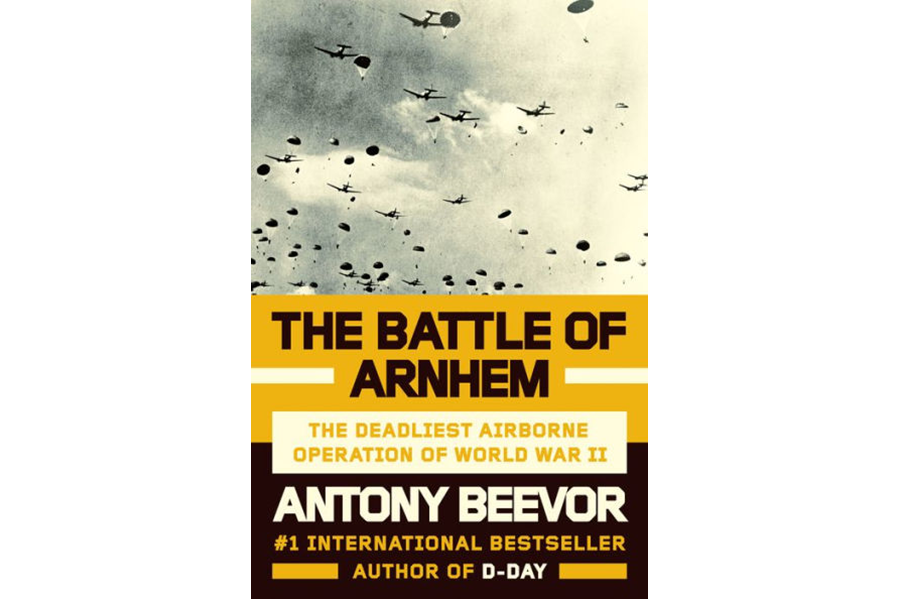'The Battle of Arnhem' brings a wealth of new detail to a major World War II disaster
Loading...
The Battle of Arnhem, bestselling historian Antony Beevor's new book tells the story of the largest airborne attack yet mounted in World War II, Operation Market Garden, the Allied offensive of September 1944. Beevor, author of half a dozen well-received histories including "Stalingrad" (1998), "D-Day" (2009), and "Ardennes 1945: Hitler's Last Gamble" (2015), is a consummate chronicler of desperate military endeavors, and in recounting the Battle of Arnhem, where Operation Market Garden finally turned from a daring move to a complete debacle, he has as his subject a heartbreaking series of catastrophes that culminated in what many Germans considered their last great victory of the war.
On paper, the operation had the clean simplicity that always makes a coup de main so attractive to generals of a certain impatient temperament. British Field Marshal Montgomery proposed a kind of clockwork thing: Allied Airborne troops would be dropped behind enemy lines in the Netherlands and secure the all-important bridges over the lower Rhine in advance of ground forces that would follow up and strike directly into the heart of German industrial production. At the far northern edge of the operation, the British 1st Airborne Division, would seize the bridge at Arnhem, holding it for the British XXX Corps, scheduled to arrive in two or three days.
Holding vital strategic targets with thinly-supplied paratroopers; moving an entire army corps 60 miles up a single narrow road in two days; sacrificing almost all of what the Germans called Überraschungerfolg – the effect of surprise; dropping troops in gradual installments; its long list of obvious weaknesses makes the plan seem like lunacy on its face. Montgomery sold it mainly on the contention that XXX Corps, the 1st Airborne Division, the American 101st Airborne Division, and all the other components of the operation would be facing little more than token resistance from a beaten enemy – old men and young boys on bicycles, essentially.
In reality (a reality British reconnaissance had warned about, fruitlessly), the German resistance forces included the 9th and 10th Panzer Divisions, and the advance Allied forces immediately encountered ferocious fighting – and so did XXX Corps in its race north to relieve the small force now trapped at Arnhem. After nine days of fighting, and with nearly 1,500 British troops dead and over 6,000 captured, Operation Market Garden died a humiliating death.
It's a story that's been told, in whole or in part, many times in histories written since – the most famous of which was Cornelius Ryan's 1974 "A Bridge Too Far" (later brought to a far larger audience by Richard Attenborough's terrific 1977 movie of the same name). It attracts historians mainly for its morbid particulars – when did things start to fall apart, who was to blame – and for the wrenching larger question: Could it ever have worked at all?
Beevor brings to the familiar story a vast amount of research in German, British, American, Polish, and Dutch archives. As usual, his narrative bristles with specifics, including countless observations gleaned from eyewitnesses to every stage of Market Garden. Devoted readers of military history will enjoy the wealth of details – and will no doubt argue with some of Beevor's conclusions, both large-scale and small. Here as in all other tellings, Montgomery receives the lion's share of the blame for the disaster, although he astounded his allies by never actually accepting any of that blame: “General Eisenhower,” Beevor writes, “until the very end of his life, could not get over the way Montgomery was never able to admit that he had been responsible for anything going wrong.”
In Beevor's account, the two most telling forces working against the operation were this purblind determination on the part of command to push ahead with a plan so obviously tactically flawed and also the failure of the Allies to anticipate how quickly the German forces would react to what was happening – and how vigorous those forces were. Under the command of Generalfeldmarschall Walther Model (“a short, stocky man with a monocle, [who] was totally unlike the sort of aristocratic staff officer whom Hitler loathed”), the Germans made the overconfident Allies pay dearly for every inch of Dutch ground, even though those same Nazi forces knew they could no longer win their war.
“The fundamental concept of Operation Market Garden defied military logic,” Beevor writes, “because it made no allowance for anything to go wrong, nor for the enemy's likely reactions.” In reality, as military historians have been pointing out ever since, virtually everything went wrong – and the Allied withdrawal (called Operation Berlin) left the Netherlands at the mercy of a brutal occupier and a brutal winter. Beevor concludes his book with a harrowing account of this “Hunger Winter,” when over 20,000 Dutch civilians died.
Historians will likely continue to explain and dispute Operation Market Garden forever. "The Battle of Arnhem" is a thrilling and deeply involving addition to that long discussion.








